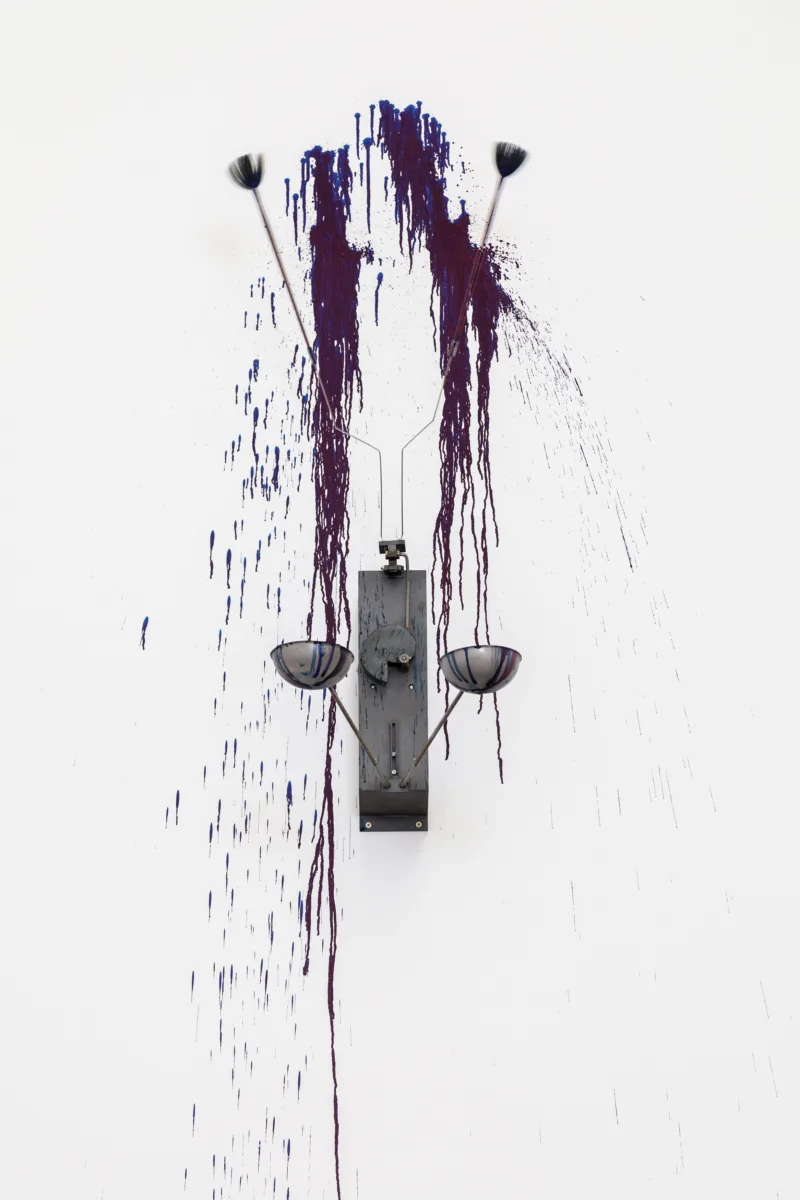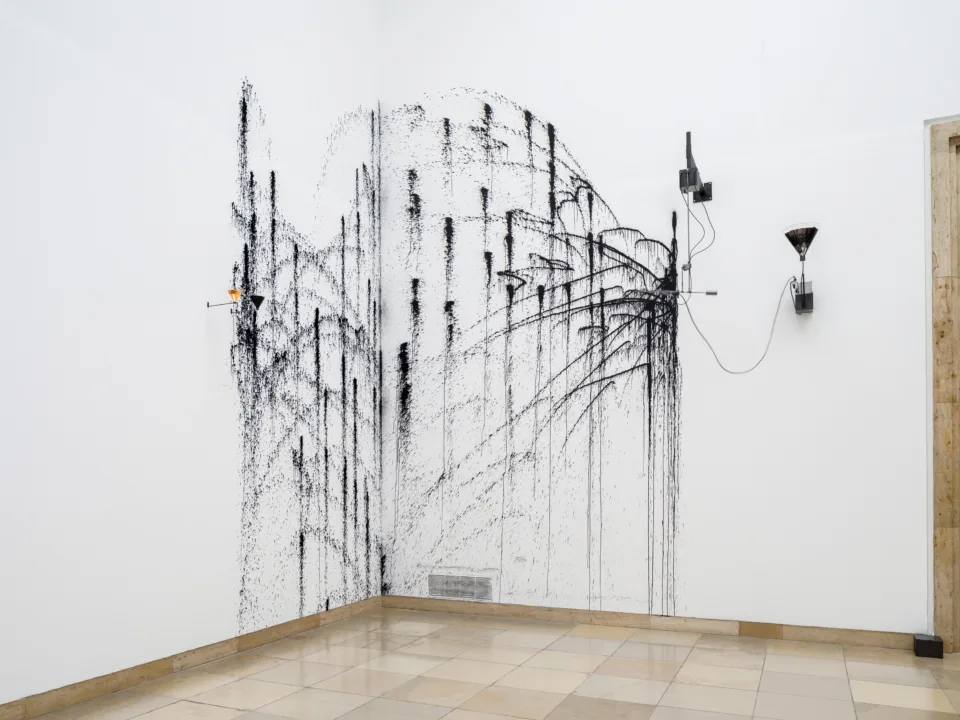This is a shortened version. The entire text can be found in the exhibition catalogue of “Rebecca Horn”.
[…]
In Rebecca Horn’s work, we never doubt that the machine is intelligent, that she is experimenting and that she is the author of the machinic other and not the invention itself.
The female cyborg has herself long been the object of feminist speculation. Donna Haraway’s classic essay from 1985, “A Cyborg Manifesto: Science, Technology, and Socialist-Feminism in the Late Twentieth Century,” refused to situate the female body on the other side of a set of definitional boundaries organized around a nature/culture split but spilling over in the twentieth century onto the murky terrain of continuities between humans and machines. While earlier versions of feminist thought had situated women and men as opposites and had installed this oppositional logic into all kinds of social networks, including science and technology, Haraway, a scientist by training, smashed through not only a skein of essentialist ideas but a structure of essentialism that marked entire arenas of human behavior as masculine or feminine. According to such ideological systems, women represented an authentic form of embodiment that was close to nature, a source of nurture, and a barrier between the human and the machinic. Haraway turned this logic around and declared: “I would rather be a cyborg than a goddess.”
But the cyborg was not simply a feminist fantasy or a rhetorical shift for Donna Haraway. Indeed, she wrote in her “Cyborg Manifesto”: “By the late twentieth century, our time, a mythic time, we are all chimeras, theorized and fabricated hybrids of machine and organism; in short, we are cyborgs. The cyborg is our ontology; it gives us our politics.” We are all already cyborgs, in other words. But a decade earlier than even this prescient feminist statement, Rebecca Horn had delved deep into the machine/body relationship and had fully explored the machinic extensions of the female body that disrupt the easy equation of femaleness to nature.
[…]
And on the theme of no bodies, what happens when Horn leaves the body out of the picture altogether? Eschewing and poking at notions of virtuosity, Horn created a machine that sprays ink over platforms of books that lie open waiting to receive the “word.” This work, Flying Books Under Black Rain Painting, installed at the Harvard Art Museums in 2014, features a machine that sprays black ink across the wall in the gallery and onto the open books. The books were chosen by the artist for this installation and were: Fernando Pessoa’s The Book of Disquiet, Franz Kafka’s Amerika, and James Joyce’s Ulysses. These books, each one preoccupied with the self and cities, journeys and writing, become surfaces for the falling black rain and provide evidence of the work after it has been completed and the machine dismantled. The self, in each book, refuses to appear in a coherent form and, in at least one of the works, goes missing. The choice of these books, therefore, offers a wry commentary on the artist as a nonessential component to the work of art which, once set up, will proceed without any singular and coherent self to guide it.

While Jackson Pollock’s splashes of paint were understood as complex expressions of a heroic self, Horn’s splashes of black ink rain down upon already written books, looking not for confirmation of their greatness or their virtuosic intention, but looking only for a place to land. By spattering ink across the writings of great male authors, furthermore, Horn’s machine is like a graffiti generator, and the automatic writing that it generates scrawls messages of disruption and obliteration across the already written major texts of culture and the walls of the elite institute that stages this encounter.
Never satisfied to just offer role reversals, women for men, mechanism for human art, randomness for intentional gestures, Rebecca Horn’s machines are clearly in conversation with the inventions of Marcel Duchamp, Villiers de l’Isle-Adam, and Fritz Lang, but, as Nancy Spector points out in her essay “Neither Bachelors Nor Brides” in the 1993 Guggenheim Museum exhibition catalogue, Horn’s “machines approach in spirit Donna Haraway’s feminist techno-myth of radical, gender-smashing female cyborgs, who appropriate ‘male’ technology for their own emancipatory ends.” I would push this even further and leave out “male technology” and just say “technology” in order to indicate that Horn’s agenda concerns the machine and gender but not the gendered machine.

